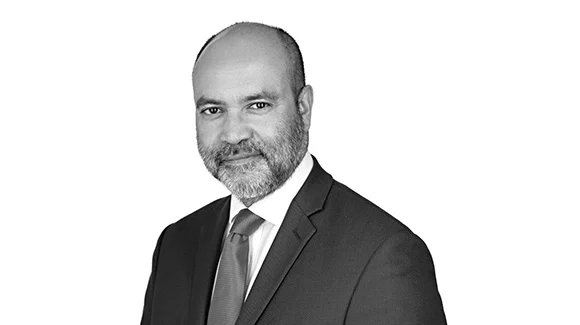Is now a good time to invest in short-dated high yield assets? If so, why?
We believe it is a good time to invest in short-dated high yield bonds because of the higher yields the asset class is delivering. Investors are now seeing proper high yield returns, in some cases of 7-10%. Interest cover is at multi-decade highs and leverage in the sector has fallen significantly in recent years. In our view stock selection in this space is key and the market really does hold some compelling investment opportunities. As long as investors pick an asset manager that does detailed bottom-up investment research and is thus able to avoid defaults we believe they can benefit from exposure to short-dated high yield assets.
What particular strengths or qualities do short-dated high yield assets offer global investors in the current market?
If you invest for a shorter period of time you tend to have greater visibility of cashflow and greater certainty on the specific positioning of the businesses you are gaining exposure to. Knowing the health of the companies you invest in and investing for a relatively short period of time should cut down default risk. Healthy companies with robust balance sheets rarely hit financial difficulties overnight. In contrast, when you invest for the longer term there is a wider time horizon and potentially more scope for things to go wrong. Things can change and companies may alter their management teams, structures or strategies over time in a way investors could not have predicted when they first gained exposure to them. We believe investing in solid corporate high yield debt for relatively short periods time - adopting a barbell approach if necessary - is a much smarter way to go than simply buying long-dated high yield assets with an index approach.
Which is better in this market, a local or global approach to high yield bond selection? Which areas of short-term high yield do you believe hold the strongest investment potential and why?
Overall we consider ourselves to be sector agnostic and believe the most important aspect of investment is to consider how stable the underlying businesses invested in are. But a global approach matters in terms of specific factors that may influence investment and returns in select markets. Telecommunications is a good example of a sector that offers strength and stability in some markets, but less in others. We believe European telecommunications companies offer some strong potential as their revenue streams, cashflow and business models are generally transparent. However, we do not favour the US telecommunications market at this time. We believe it lacks the lucrative mobile operations its European counterparts run in a market where a small number of large players tend to dominate the business. This means those who invest purely in US high yield would likely be exposed to this downside. In contrast, being a global investor is really helpful in that, as an active investor, you can navigate risk and pinpoint specific market opportunities. A global approach allows investors to buy assets in the US, Europe and can also help them target some of the more attractive prospects in emerging markets.
What impact are higher inflation and interest rates having on credit and other markets? How can investors adapt to this so-called ‘regime change’?
The shifting macro market trends we have seen over the last 18 months have had a real impact on fixed income assets, especially in the investment grade credit and real estate markets. A proportion of companies within these sectors are highly levered and, in our view, it really doesn’t make much sense to invest in them in the current market. When investing in high yield credit it pays to be very selective and have a thorough understanding of the businesses that are to be invested in. There are some key questions investors need to ask such as: what is the capital expenditure of a company, how highly is it levered and does it have sufficient funds to cover unexpected issues? It is important to get a proper understanding of the approach and goals of businesses before buying into their debt. High growth companies, firms with unfunded business plans and opaque structures may not prove to be the best investment options in the current market. Also, on a geographic basis - namely in emerging markets - when a country hits problems it doesn’t really matter how good its underlying companies are. It can still leave investors exposed to unwanted and potentially damaging country risk.
How risky is high yield as an asset class in the current market and what default rates might investors expect in the year ahead?
While we expect to see some defaults, perhaps in the 3-4% range, we believe the overall default level will not be as high as we have seen in the recent past. Historical default rates are 6%2 . There are potential problem sectors and some real estate companies whose debt has fallen from investment grade to high yield do look potentially vulnerable. Yet the stability and strength of the high yield debt market, as a whole, has generally improved in recent years. High yield issuing companies have tended to become much bigger and more stable, while the credit quality of high yield indices has also improved over time.
How optimistic are you about the market outlook for 2024?
From a macro perspective, our assumption is that interest rates won’t get cut in any significant way until 2025. We anticipate that interest rates will stay higher for much longer than many other people think and both issuers and investors should budget for that. High yield investors face a number of questions in the months ahead. Are we going to see growth in 2024? Are we going to see a recession? We believe we will see a downturn, though we also predict we are unlikely to face a severe recession. In the current market we do believe it pays to expect the unexpected. In terms of risk, investors need to be fully aware of what is occurring on the geopolitical front. As we have recently seen in both Israel and Ukraine, events can escalate quickly. Investors need to be aware of their exposure to potentially problematic markets and assess any exposures they have to riskier jurisdictions quite carefully.
Overall we believe the outlook for the high yield and shorter ended end of the market is positive. But investors will need to adapt their approach to a market which has fundamentally changed from the immediate aftermath of the global financial crisis.
Importantly, we would argue that from 2012 to 2020, the key factors in the market were driven by interest rate movements and the actions of the central banks. Now it’s different. After the Covid-19 pandemic the market environment changed. We find ourselves in a place where bottom-up credit analysis and cashflow modelling are, in our view, vitally important once again. Looking ahead into 2024 and beyond, we believe the quality of this analysis will separate the fund managers who will succeed in this market and generate strong returns from those who will not.



